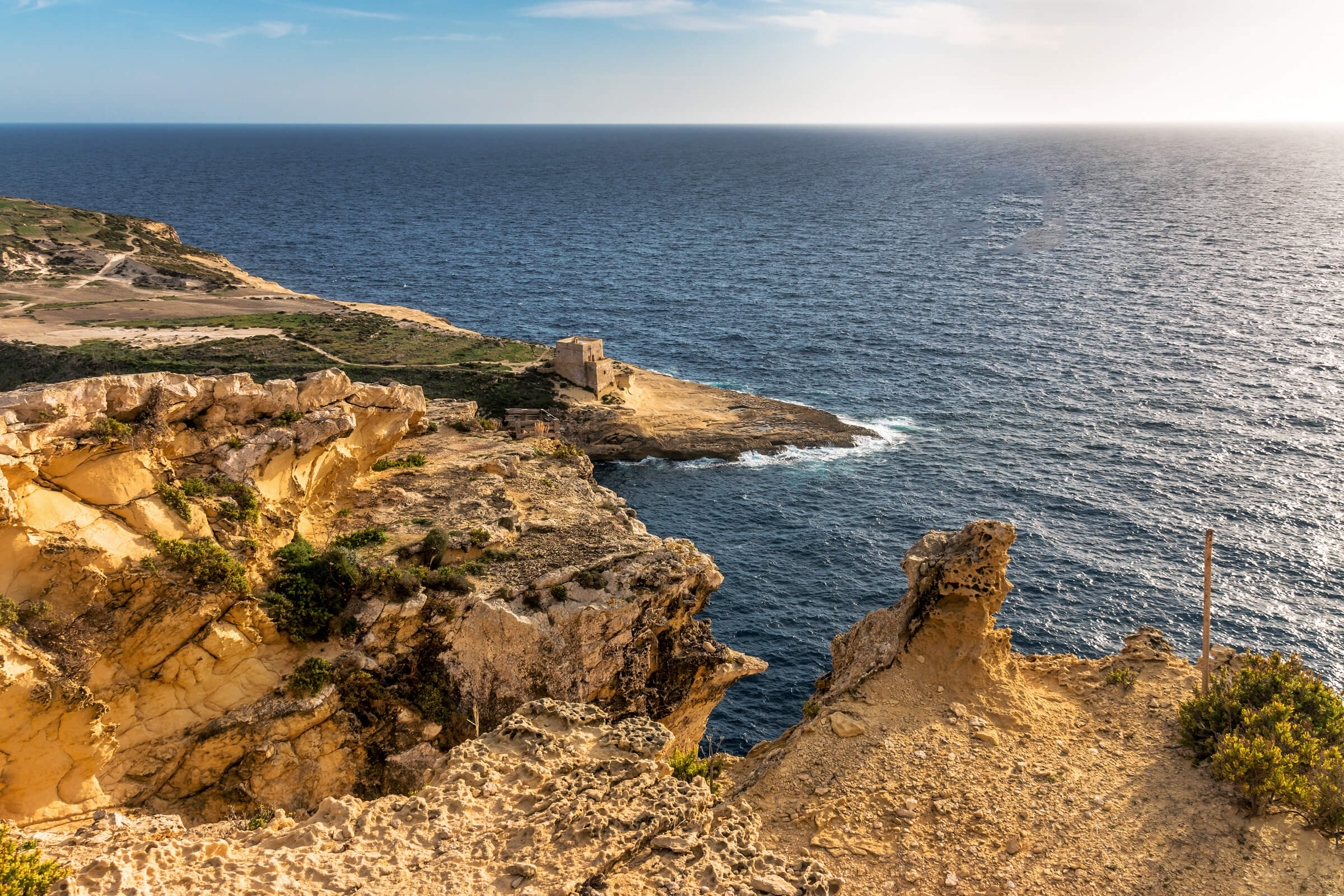The Knights of St John left Gozo with a collection of historic watch towers, dotted around the outskirts of the island. The towers were built to serve as a communication system for the knights as they provided a 360-degree view of the surrounding waters.
The Gozo watchtowers are the: Mgarr ix-Xini Tower in Xewkija, the Xlendi Tower, the Dwejra Tower and San Blas Tower in Nadur.
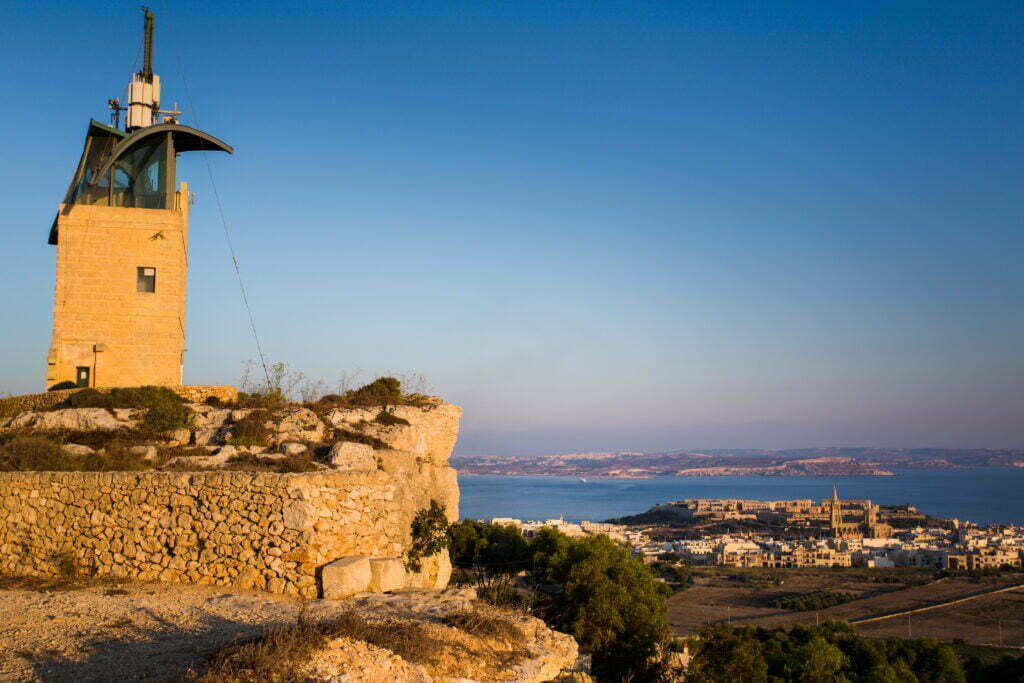
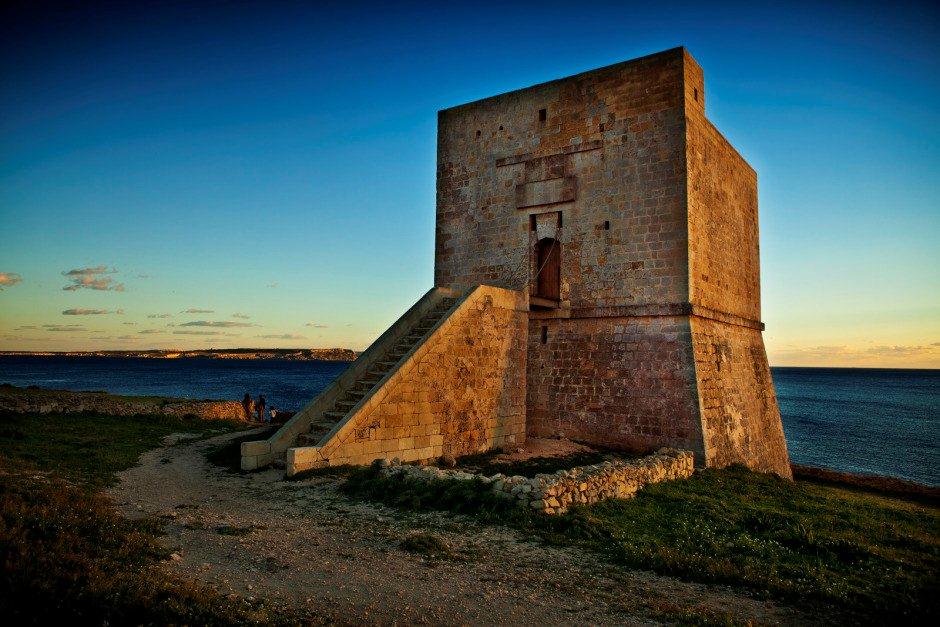
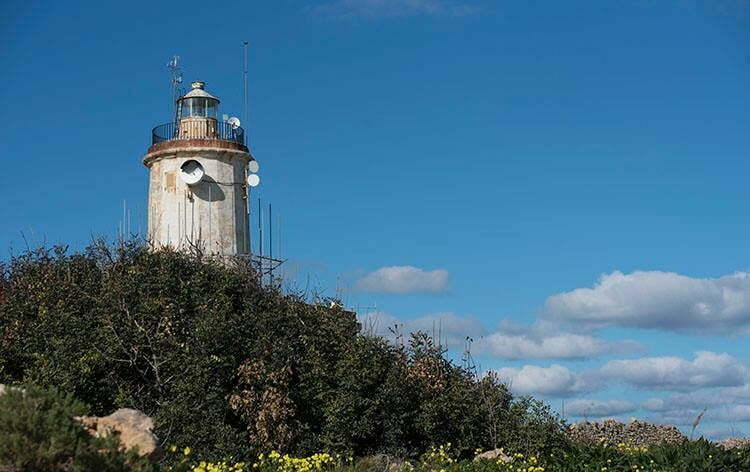
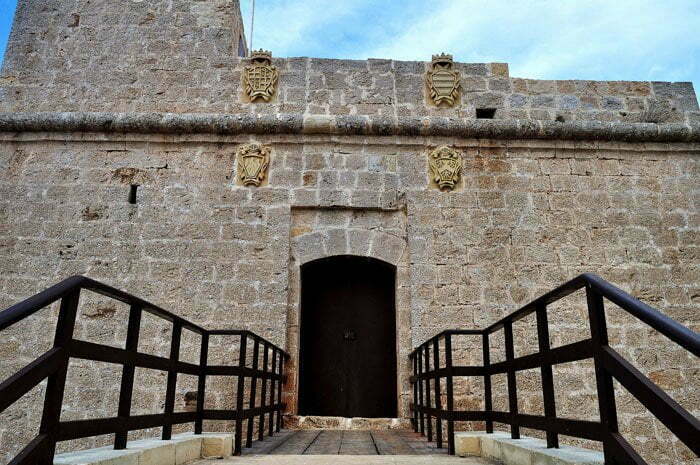
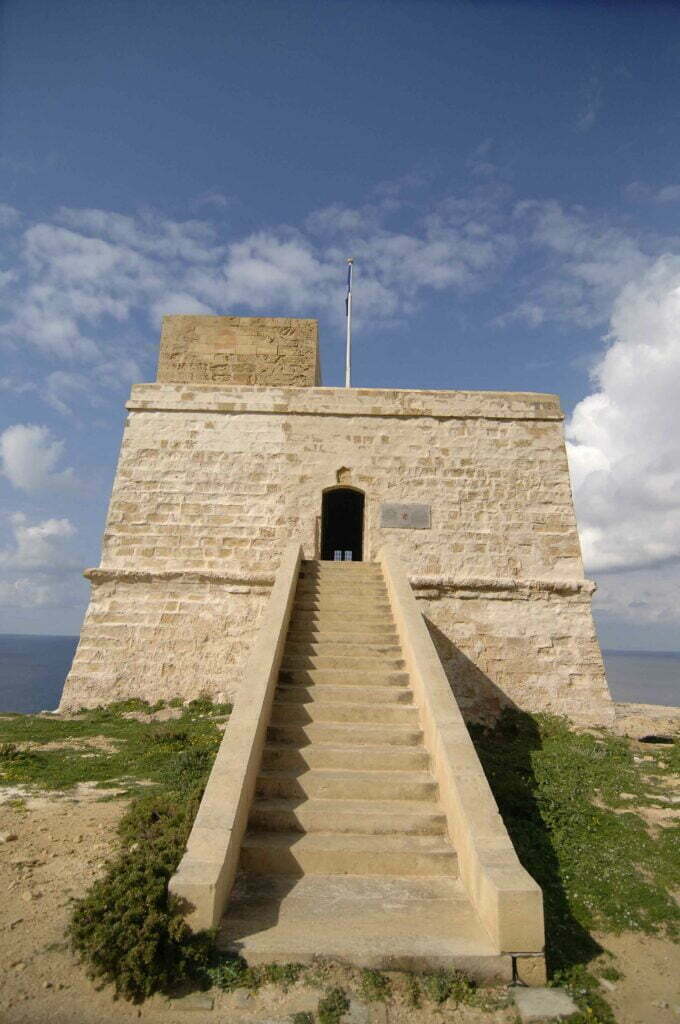
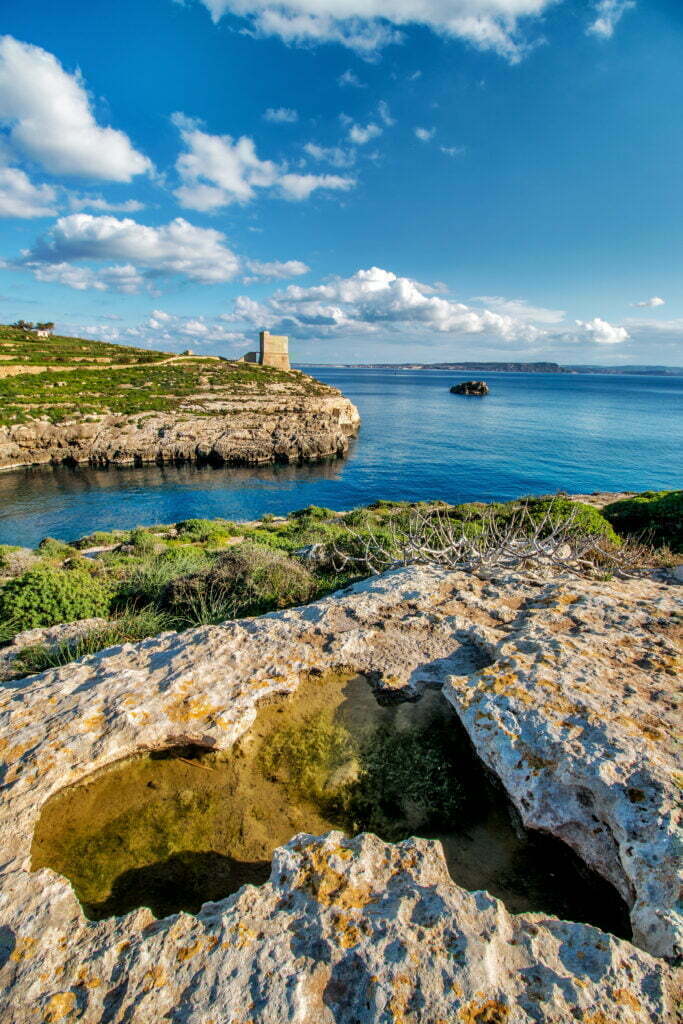
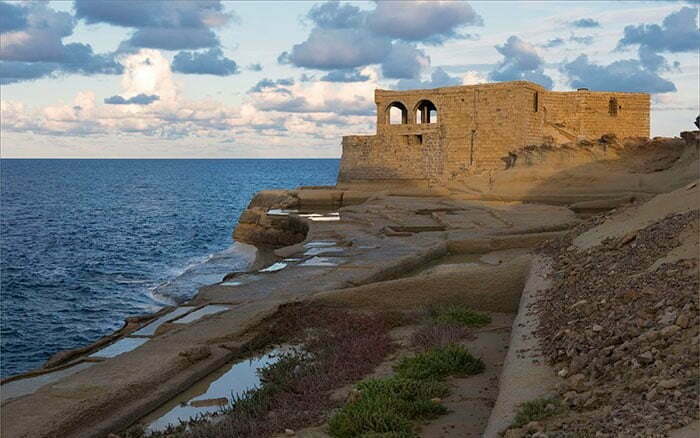
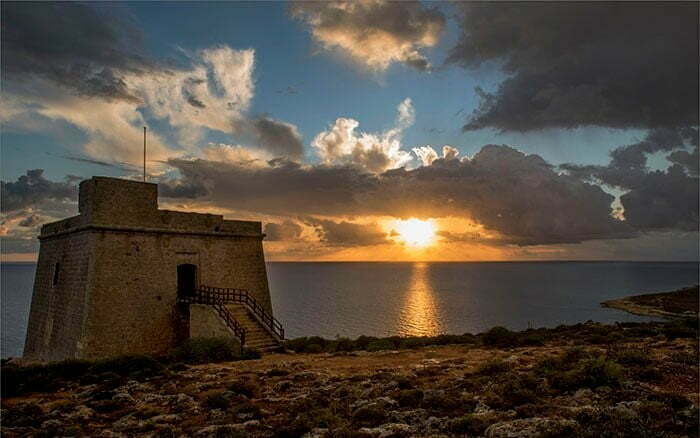
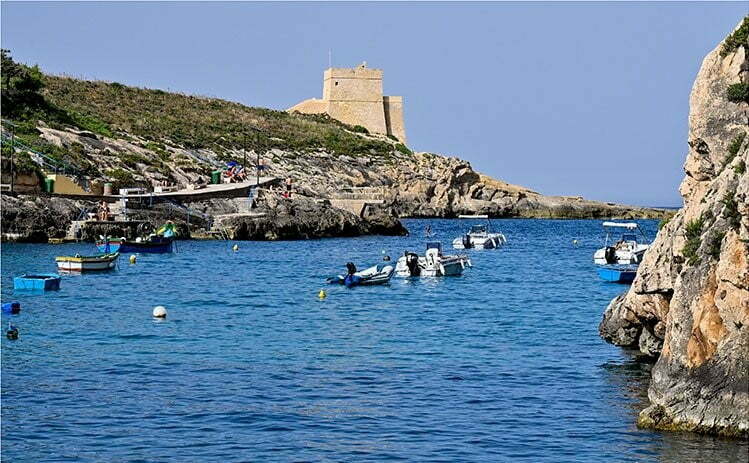
Isopu Tower
San Blas Tower, also known as ‘it-Torri ta’ Isopu’, is situated on the cliff between San Blas and Dahlet Qorrot. It was built in 1667 during the reign of Grandmaster Nicholas Cottoner at the expense of the Universita of Gozo. The guns of this Tower opened fire on the French fleet in June 1798, a distinction which no other Tower can claim!
It is square in shape, with thick battered inwardly-sloping walls. Internally, the Tower consists of a high barrel vault with an intermediate floor resting on rib arches. A spiral staircase provides access to the various floors. Due to the remote location and inaccessibility of the Tower, the restoration work was carried out entirely by hand by Leli Saliba, known as ‘il-Bufajra’, and his son. The spiral staircase was non-existent and had to be built from scratch. The interior of the Tower had collapsed, and the roof was completely rebuilt, modelled on the sole surviving original arch, which is still visible today.
The Tower was restored as a collaborative project between Din l-Art Helwa and the Local Council of Nadur. Din l-Art Helwa has signed a management partnership agreement with the Nadur Local Council to ensure that the use of the Tower for cultural heritage purposes will be encouraged and carefully managed.
Xlendi Tower
The Xlendi Tower was built in 1650 and since two towers preceding it do not exist today, this makes this tower the oldest one in Gozo. The Xlendi Tower was first projected by Baliff Baldassare de Demandolx in 1649 and after slightly more than a year it was already completed. It was paid for by the Universita of Gozo and the Grand Master of the time, Lascaris, ordered that 2 iron guns be mounted. It is 10 metres square and it has a unique shape as its seaward side has its lower part protruding out. It was also manned by three guards. In 1681, only 31 years after it was constructed, it was described to be in a bad state and needed restoration. As with other coastal towers, under British rule the Xlendi tower was manned by the Royal Malta Fancible Regiment which changed
its name in 1861 to the Royal Malta Fancible Artillery. In 1873 the latter gave up its coastal guard commitments and so it was abandoned. During the second World War the tower was used as a Coast Observation Post and was manned by the Coast Police.
The tower has now been recently restored as a joint venture between Din l-Art Helwa and the Munxar Local Council.
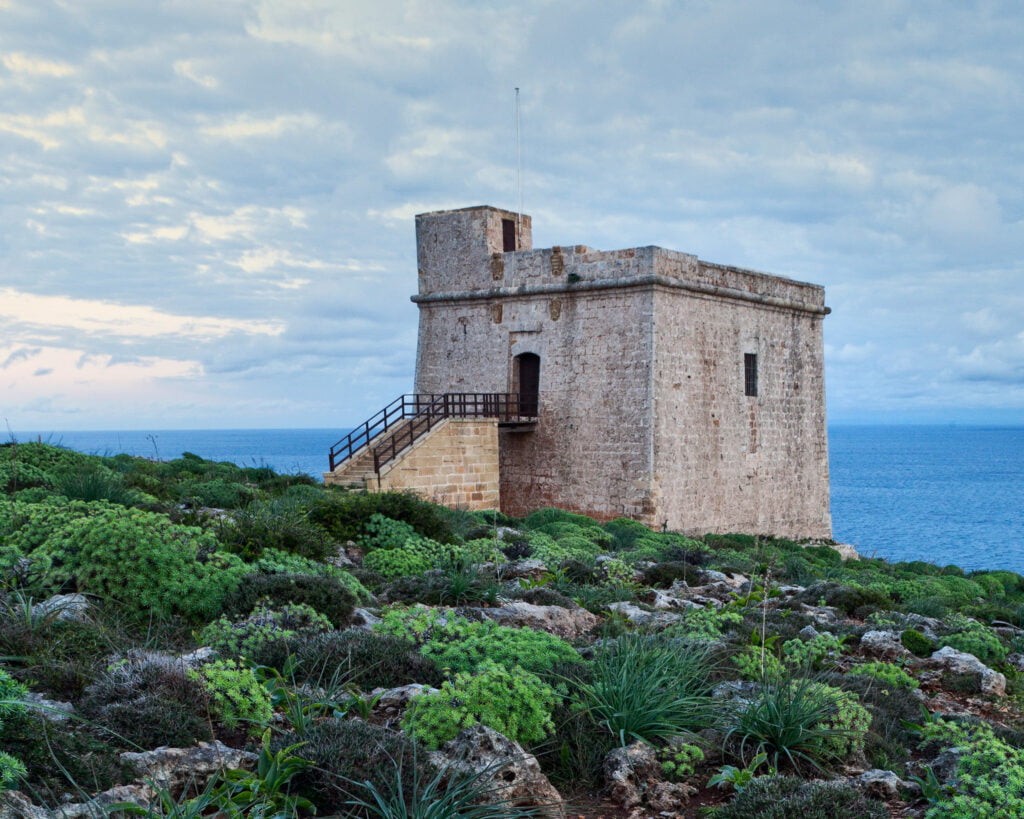
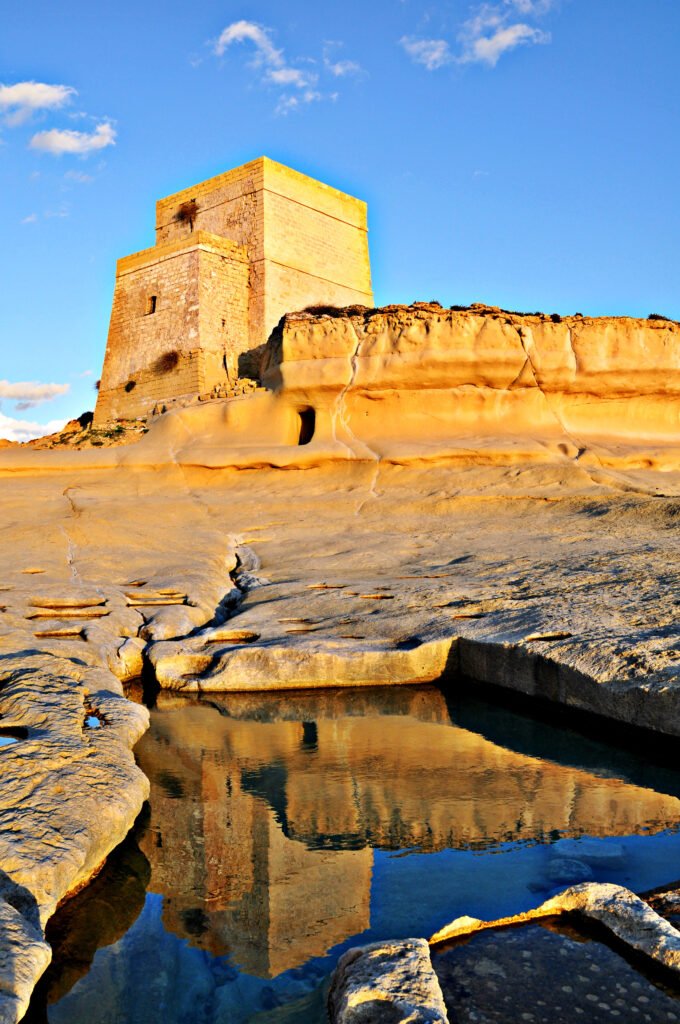
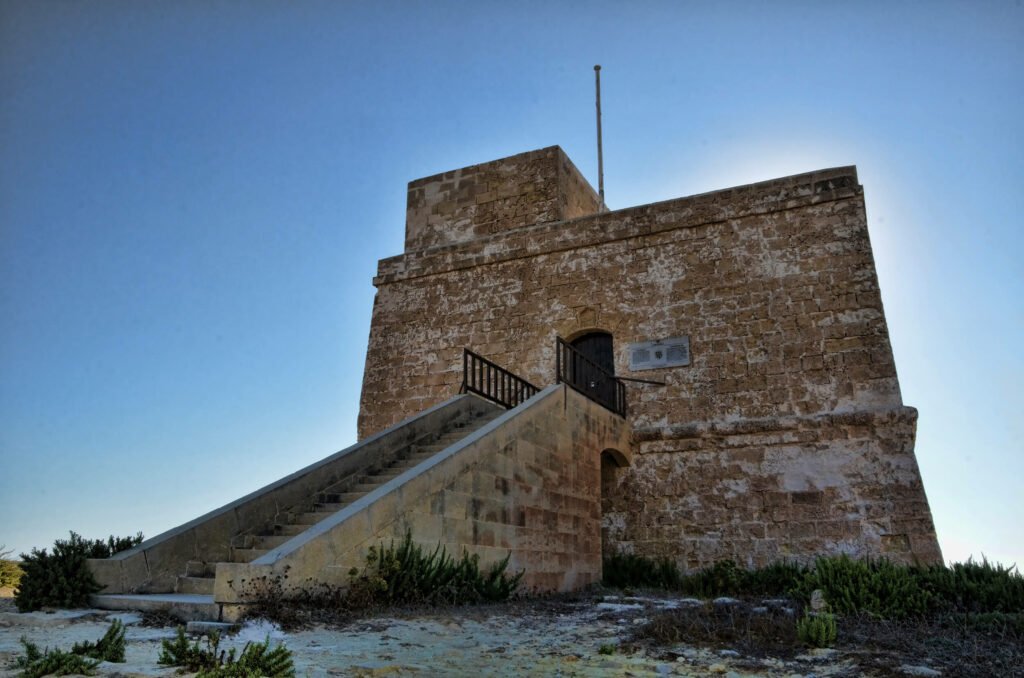
Mgarr Ix-Xini Tower
At the end of the sixteen century a Tower was built to safeguard the inlet of Mgarr ix-Xini. The tower is now known as ‘It-torri ta’ Mgarr ix-Xini’. It was built at the expense of the local Universitas on a plan by Mederico Blondel, an engineer of the Order of Saint John. Its estimated cost was 857 Scudi. The tower was functioning by June 1661, when its artillery and gunpowder were provided by the Order. It was manned by a castellan and a professional bombardier, both of whom were salaried by the Universitas. This tower could send and receive communication from the Comino Tower and later, also from that the Santa Cecilja Tower.
The tower, with the entrance landward, has two floors with one room each. The lower room has a ceiling of arched stone corbels, two small windows and a hatch leading to the upper or main room. This was the living and all-purpose room of the guards. The room has a strongly built vaulted ceiling to withstand enemy cannon ball. A winding spiral staircase leads to the roof. On the roof there was a gun platform enclosed by its embrasured parapet. On the landward side, there was also a small powder magazine and a guardroom, the latter a unique feature in that location. These are now half dismantled. However this tower was not adequate and a bigger tower was built inland on the hill overlooking the bay, on what is today’s Gozo main road, known as the Santa Cecilja Tower.
Extensive restoration works started in the year 2000 in a concerted effort between the Ministry for Gozo and the eNGO Wirt Għawdex.
Dwejra Coastal Watch Tower
The Dwejra tower was financed and constructed by the Università of Gozo to eliminate the threat from the undefended Dwejra coastline. Once completed in 1652 the Order, under Grand Master Lascaris, equipped the Tower with 3 x 6 pounder cannon, powder fuse, ammunition and the ancillary equipment needed to make the Tower operational.
During this period Dwejra Tower must have felt like a very vulnerable and isolated outpost. This building was known as the Dwejra Tower or the Qawra Tower. Being isolated at the extreme West of the islands, the Tower did not see any action during the French invasion in 1798 but with Fort Chambray and the Citadel both in French hands, the island had no choice but to capitulate.
During the British period the Tower continued to be manned, fulfilling an anti-smuggling role. By 1839, the Tower was manned by a detachment of the Royal Malta Fencible Regiment but by 1873 this detachment was withdrawn. The Tower that had protected Gozo for so long was abandoned to the ravages of the weather and to vandals. The Tower was re-instated as a watch tower during World War One and again in World War Two, when it was officially Observation Post No. 3, only to be abandoned again. Sadly, the Tower was left to deteriorate under harsh weather conditions and through vandalism, leaving it in a very perilous state.
However, this Tower has been restored to its former glory by NGO Din L-Art Ħelwa .
